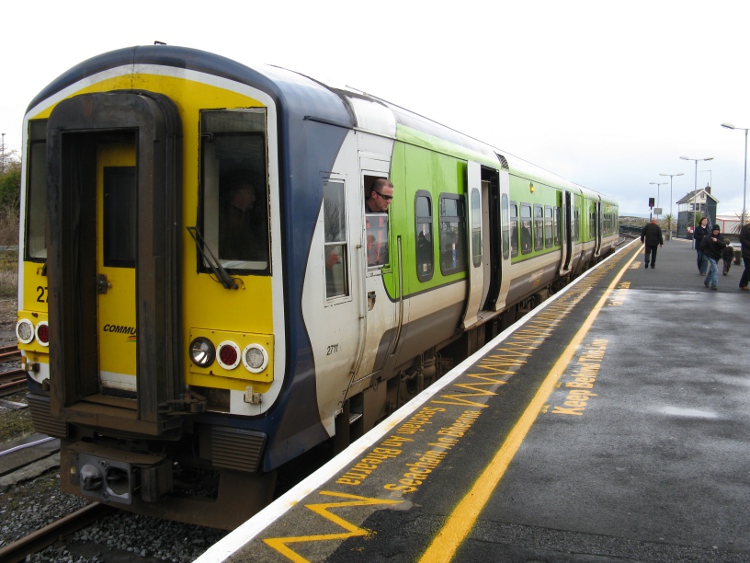
“O Paddy dear, and did ye hear
The news that’s going round?”
The tunes whistled by old men on the next row of seats haven’t changed since I first encountered Iarnród Éireann a dozen or so years ago, but everything else at Ireland’s national railway has. Dirty diesel locomotives hauling old coaches with even more ancient passengers have gone, and in their place is this Dublin to Cork inter- city train of South Korean-built coaches packed with passengers drinking lattes as they tap away at laptops.
The reason for my return visit was the reopening at the end of March 2010 of the 58 km line from Ennis to Athenry. Known as the Western Rail Corridor, this creates a link between Limerick and Galway, and as such is almost unique as a route which doesn’t radiate from Dublin (Limerick Junction – Waterford has three trains a day). The line had retained some freight after the end of passenger services in 1976, but closed when this disappeared.
There aren’t many countries reopening rural lines, but the Irish government is trying to spread development, tackling fears that the entire working population might decided to move to Dublin. The €106·5m revival will increase options for commuting into Limerick and Galway, where traffic is now a growing problem, and further stations are planned to serve housing which is springing up.
A ticket for the two-hour journey costs €20. “A return is cheaper than a single”, advises the lady in the ticket office. Leaving Limerick every seat was taken, though few passengers went all the way through. There was quite a cross-section on board, from shrieking teenagers to pensioners, and a smartly dressed young couple, her carrying bags from fashion shops, him reading, of all things, Railway Modeller.
While it is literally true to describe the lines as an inter-city route, this wouldn’t reflect the reality of five trains a day, operated by two-car DMUs. Horses, sheep and goats observe the train from small fields divided by low stone walls, an enormous bull eyes us over his fence, and herons, rabbits or deer are never out of sight.
In the 1980s Ireland’s railways had been allowed to decay, and things came to a head with an accident in 1997. The perhaps surprising decision was taken to modernise rather than simply give up, just as the “Celtic tiger” economic boom and European Union money arrived. The results have been dramatic. It is easy to get sentimental about the old days of loco haulage and semaphore signals, but IÉ has modernised quickly and seems to be doing a more useful, if less picturesque, job than it once was.
The newly reopened stations look strongly built in concrete and steel, almost too industrial for a landscape of ruins and standing stones. New concrete bridges have replaced level crossings where possible, else modern barriers have been installed.
The line opens up new views. “I’ve never seen Gort from this side before” someone comments as we pause for a southbound train to pass. Looking at the state of a back garden I think the owner must have believed no-one ever would.
The connection to the Dublin – Galway main line at Athenry faces towards Dublin, and so the driver changes ends to take us into the terminus. Planning has begun to reopen the next 25 km to Tuam next year and 27 km to Claremorris some time after that, while the 74 km trackbed to Collooney is to be protected for a possible Sligo service.
Tied to a lamppost at Athenry is a sign from a local group which lobbied for the reopening of the railway. It simply says “welcome back”.